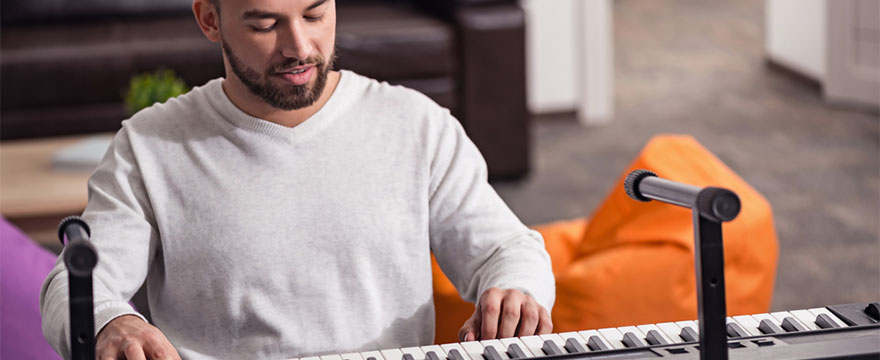 You may have heard the term ‘muscle memory’ and wondered what it means when learning to play the piano, and how important it is. To say that muscle memory, and the correct application of it, is important would be an understatement. But what is muscle memory and how does it apply to playing the piano?
You may have heard the term ‘muscle memory’ and wondered what it means when learning to play the piano, and how important it is. To say that muscle memory, and the correct application of it, is important would be an understatement. But what is muscle memory and how does it apply to playing the piano?
When a movement or action is repeated over and over for a certain period of time, a long-term muscle memory is created for that specific movement, which eventually allows your body to perform this task with little or no conscious effort. And to be able to apply this when playing the piano is a key part of becoming an accomplished pianist.
However, there is a very careful approach that needs to be applied in order to ensure the muscle memory is effective. The correct way to apply this is to practice at a tempo which ensures you make no mistakes. This can sometimes seem very time consuming and slow at first, but you will reap the rewards later when you begin to pick up the tempo.
The reason why it’s essential that you practice everything at a tempo that ensures you make no mistakes is so as not to confuse your muscle memory. If you practice something and constantly make errors, then you are confusing your muscle memory into thinking this is the correct way to play it. If after a certain amount of time you are able to eradicate these errors and play it correctly, your memory will be even more confused because it’s being fed numerous different ways. And when you revisit this the next day, you may find that you are not able to play it correctly again.
For all you pianists out there that have been practicing a difficult piece and there’s a bar or two that you just can’t quite get right, and you constantly make mistakes; then try to realise why this is happening. You are most likely trying to play these difficult passages at the same tempo as the rest of the piece, which is the main problem. You can now of course go back to these bars and play them slower without mistakes, and try and undo the incorrect muscle memory you’ve created, but it may take a long time to get out of playing these mistakes. If you’d have taken the time to play these parts much slower to begin with, and without mistakes, you would now be able to play it perfectly.
So the absolute correct way of learning to play the piano is to play everything slowly at first to ensure you don’t make any mistakes. Force your hands into playing it correctly and try to make sure there are no mistakes whatsoever. A lot of patience is required, but you will be thankful for it in the end when you can play it without thinking!
Learn to play piano blues online with me
My online blues course teaches blues piano from scratch and builds your ability in a modular way. As you progress through the course, you’ll learn left hands, right hands, bridges and endings which you’ll use together to make your own blues piano compositions. I’ll show you the blues scale early on, giving you everything you need to start improvising – and we’ll progress to advanced licks and an impressive tutorial song to consolidate your new skills. Finally, we’ll move onto some popular blues songs, including music by the great Jerry Lee Lewis and my own personal favourite, Ray Charles.
I charge just £19.99 for 6 full months access, with 58 videos and counting – that’s less than the cost of a single piano lesson! – and I offer a 100% satisfaction money back guarantee.

What level of piano playing do you need to be at to cope with the blues course, please?
That’s a great question! You don’t need any experience whatsoever, and even if you’ve never played before you can learn with my course. There are tutorial videos available for all levels – beginners, intermediate and advanced. But don’t forget, if you sign up to the course and for any reason would like a refund, then please message me and I will return your money the same day as per my 100% refund guarantee 🙂
This is helping with Robert Richmond’s arrangement of Rachmaninoff’s Second Concerto Second Movement IN the coda which is one of the most impressive passages. I’ve played it so many times I am ready for the muscle memory to kick in.
How do you develop muscle memory for something like the left hand of the second section of The Entertainer, in which the left arm has to constantly move back and forth? Is it ok to look at the keyboard while you’re practicing this? (If I don’t look, I do nothing but make mistakes…)
There’s no real secret to developing muscle memory, other than play it over and over for hundreds and thousands of hours. And yes, it’s fine to look at the keys whilst you play. No need to force yourself to look away as this will happen naturally over time through lots of practise.